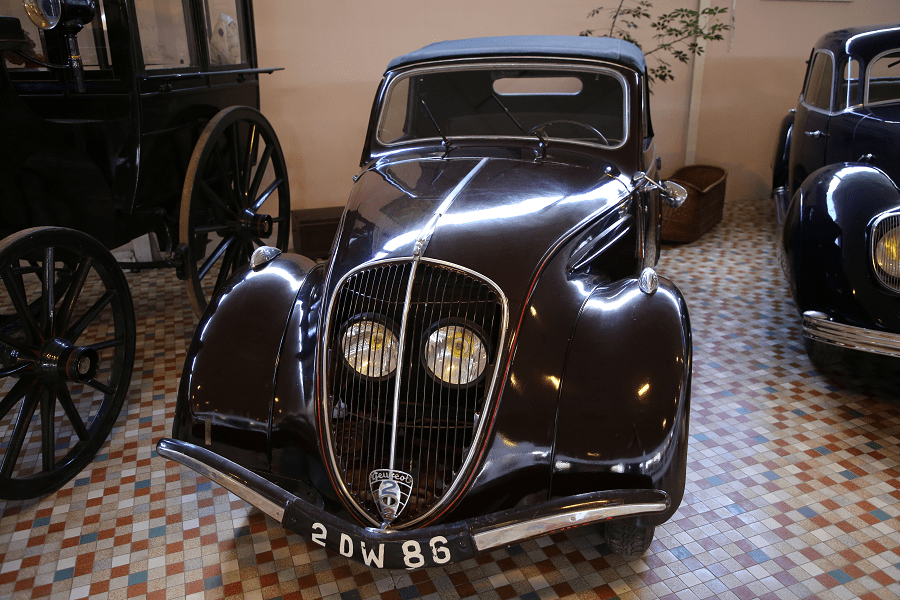Brown Peugeot 202 BH from 1948 with four cylinders (1130 cc). Max. speed: 100 km/h
The Peugeot 202 is a supermini developed and designed by the French car manufacturer Peugeot. Production of the car ran between 1938 and 1942 and then, after a brief production run of 20 in early 1945, restarted in mid-1946. It was sold until 1949, by when it had been replaced by the 203.
Production started in January 1938, and the car was formally launched on 2 March 1938 with a dinner and presentation for the specialist press in the fashionable Bois de Boulogne district of Paris. The previous autumn, at the 1937 Paris Motor Show, Peugeot had staged a massive “referendum” among visitors to the show stand to find out what customers expected from the new small car then under development. It is not clear whether there would still have been time to incorporate any of the suggestions of the public in the car as launched, but the participative nature of the exercise certainly generated positive pre-launch publicity for the 202.
With the body removed, an eye catching aspect of the 202’s chassis was the positioning of the battery, located below and ahead of the radiator (itself conventionally sited ahead of the engine). This arrangement, which made inspection or replacement of the battery exceptionally easy, was made possible by the “streamlined” sloping front grill, shared with the manufacturer’s larger models introduced during the late 1930s, such as the Peugeot 402 and its derivative, the 302.
The 202 was powered by a 1133 cc water-cooled engine giving a maximum of 30 PS (22 kW) at 4000 rpm and a top speed of approximately 100 km/h (62 mph). Fuel-feed came via overhead valves, at a time when the most obvious competitor, the recently introduced Renault Juvaquatre, was still powered by a side-valve power unit. Power was transferred to the rear wheels by means of a three-speed manual transmission featuring synchromesh on the top two ratios.
Back in 1931 the 202’s predecessor, the Peugeot 201, had been the first mass market volume model to feature independent front suspension.
Independent front suspension, widely held to improve both the road holding and the ride of the car, was again incorporated on the new 202, meaning that this was a feature across the entire Peugeot range: the same claim could not be made for the range on offer from rival Renault.
As on the contemporary Citroën Traction, relatively elaborate “Pilote” style wheels, featuring alternating holes and structural metal support sections round the outside of the inner hub, were replaced by simpler (and cheaper to produce) pressed disc wheels when, following a heroic reconstruction effort at the Sochaux plant, production could be resumed in 1946 following the war.












